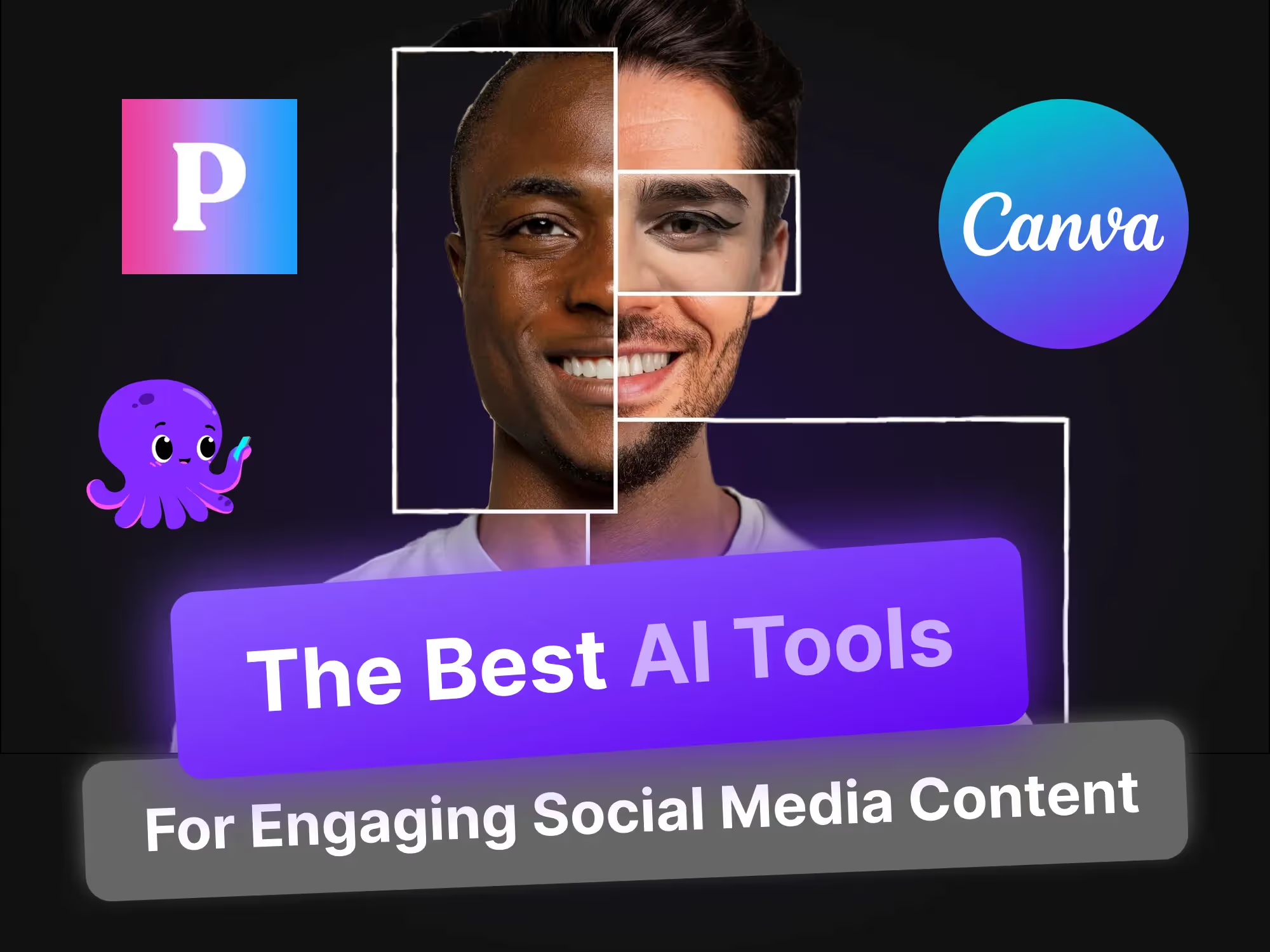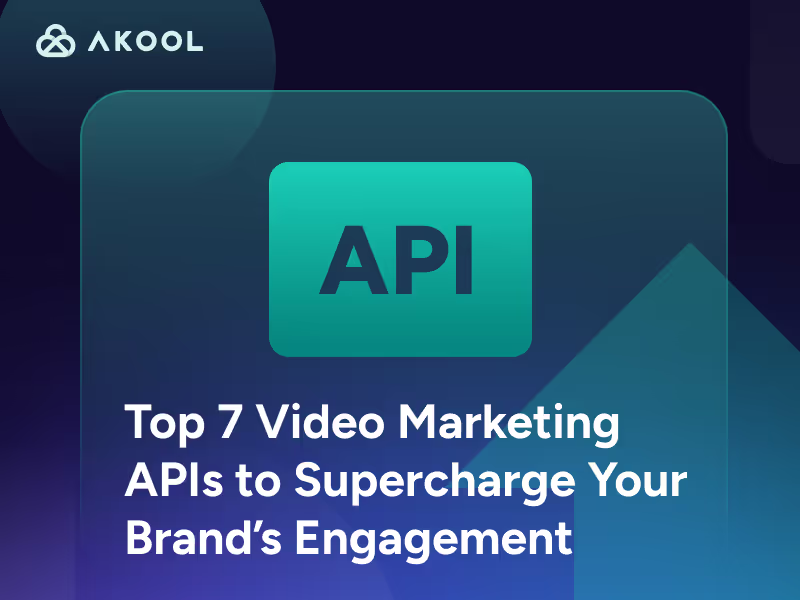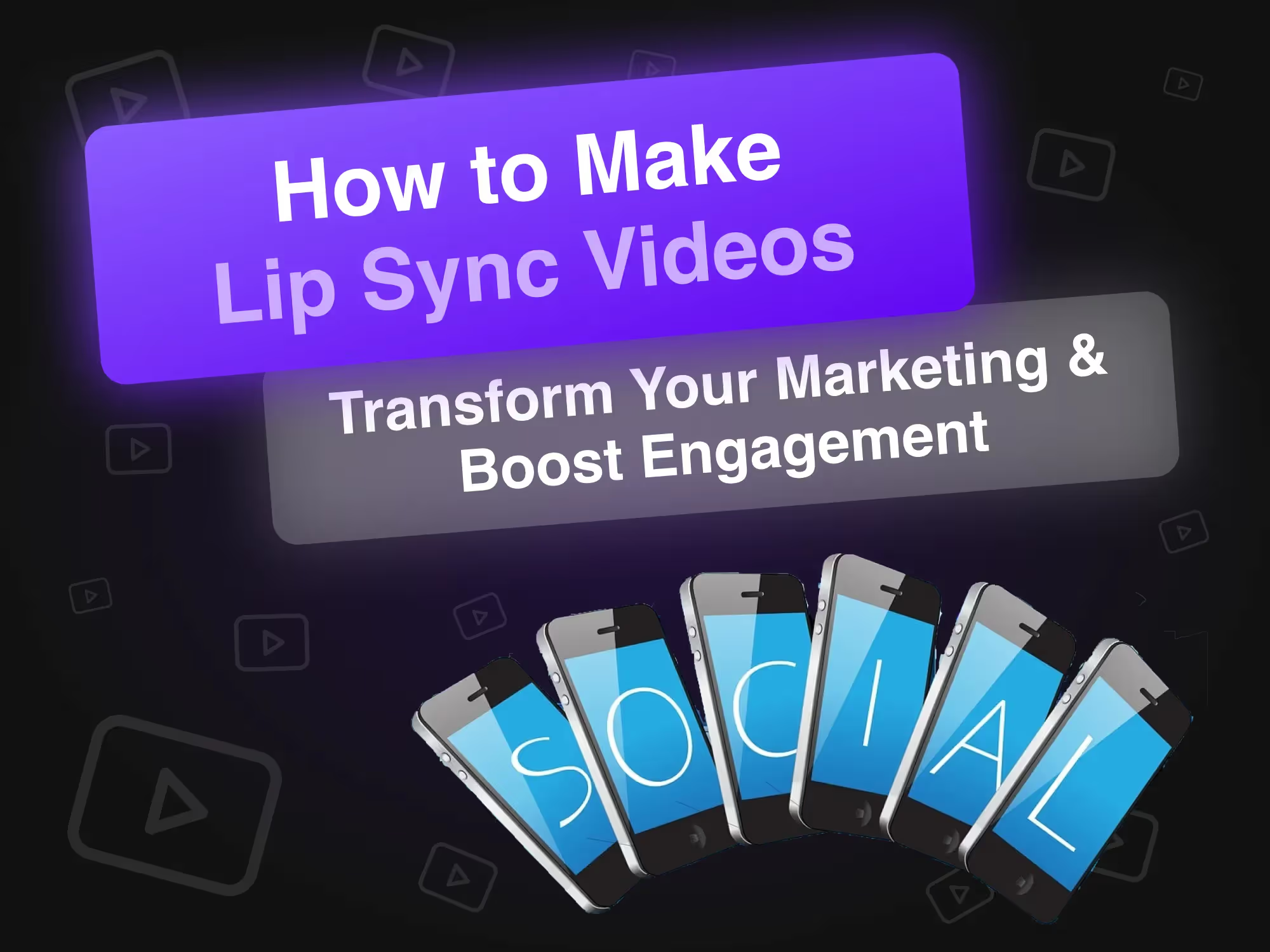Video engagement is often low because audiences are overwhelmed with content, have shrinking attention spans, and expect instant value.
Even with great visuals, if your video doesn’t hook viewers quickly or encourage interaction, it’ll likely get skipped, muted, or scrolled past.
The truth is: what worked a few years ago doesn’t always cut it now.
In this article, we’ll share what actually works in 2025 to boost video engagement, backed by evolving viewer behavior, platform algorithms, and smart content strategies.
Whether you're creating for social media, marketing, or education, these tips will help your videos grab attention, keep viewers watching, and drive real results.
Top 10 Tips for Video Engagement
1. Hook Within the First 1.5 Seconds
In 2025, attention is the most valuable currency and the quickest to vanish. Platforms like TikTok, Reels, and Shorts are optimized for endless scroll behavior, meaning your video must earn a viewer's interest in the very first second or two. The initial frame needs to convey intrigue, value, or emotion instantly, or you’ll lose the viewer before your message even begins.
Start with movement, bold text, or a striking visual. In 2025, algorithms prioritize retention; if you don’t grab attention instantly, viewers bounce.
Example: Begin a tutorial with the end result first: “Here’s how I doubled my revenue using this 3-second trick…”
2. Vertical First, Always
By 2025, vertical is no longer just a TikTok trend,it’s the standard. With over 90% of content consumed on smartphones, vertical video fills the screen and creates a more immersive experience. Even platforms that were once horizontal-first, like YouTube, now heavily support and promote vertical formats through Shorts and vertical livestreams.
Mobile-first is now mobile-only for many users. Design for vertical (9:16), even for long-form content.
Example: TikTok and YouTube Shorts now support 10-minute vertical videos—use it to go deeper without switching formats.
3. Interactive Overlays
Static videos can feel like a broadcast, but interactive elements turn them into a conversation. Whether it’s through native platform features like clickable polls or custom-edited overlays like “choose your path” options, interaction invites viewers to lean in rather than passively watch. Platforms are also rewarding these engagement spikes with better reach.
Use clickable CTAs, polls, or in-video quizzes to make content feel participatory, not passive.
Example: “What would you do? Tap A or B on screen.”
4. Captions as Visual Hooks
Gone are the days of plain, auto-generated captions. In 2025, captions have become part of the video’s visual rhythm and storytelling. Stylized, animated, and creatively timed captions enhance clarity and emotional impact, especially with most viewers still watching with the sound off.
Captions aren’t just accessibility tools. They’re part of the design. Stylize them with emojis, bold fonts, or kinetic motion to reinforce key points.
Example: Use animated text to emphasize “5x ROI” when mentioned in dialogue.
5. Micro-Stories Over Monologues
Long, uninterrupted monologues are fading fast. Instead, audiences crave content structured in micro-stories—short, self-contained moments that deliver value quickly. This format aligns perfectly with short-form algorithms, but it also improves watch time on longer videos by providing internal momentum and variety.
Break content into punchy, story-driven moments that can stand alone or be serialized.
Example: A product launch split into three mini-episodes: “Problem → Solution → Results.”

6. AI-powered thumbnails
In 2025, guessing what thumbnail will perform best is outdated. AI tools can now analyze elements like facial emotion, text clarity, and even color psychology to predict click-through rates before publishing. Some platforms auto-test multiple versions in real time, showing the best-performing one to more viewers.
Thumbnails auto-tested via AI tools can predict which image will drive the most clicks.
Example: Use AI to A/B test five versions before publishing.
7. Use Generative Voice Cloning for Localization
Global audiences are more accessible than ever, but language remains a barrier. In 2025, generative AI allows creators to dub their videos into different languages using their own voice, tone, and delivery style. This preserves authenticity while vastly increasing reach.
Dub your videos using your own voice in different languages. It expands reach while maintaining trust.
Example: A creator posts the same video in English, Spanish, and Hindi using a cloned voiceover.
8. Optimize for Silent Viewing
Even when sound is available, many viewers consume content silently by default—on public transport, in bed, or while multitasking. That’s why designing for sound-off viewing is a must. If your story only works with dialogue, you’re losing a huge chunk of your audience.
Most viewers watch with sound off. Rely on bold visuals, expressive faces, and contextual on-screen cues.
Example: Use GIF-style reactions and text overlays that convey emotion without audio.
9. Time-Stamps and Chapters in Short-Form
Just because a video is short doesn’t mean it should feel rushed or unstructured. Adding internal “chapters” gives viewers a sense of progression, which boosts satisfaction and retention. Visual dividers, step counters, and even color-coded transitions help create clarity.
Even short videos benefit from clear segmentation. Use visual dividers or quick on-screen cues to signal structure.
Example: A 2-minute guide includes “Step 1,” and “Step 2” labels as animated headers every 20 seconds.
10. Loopable Endings to Maximize Watch Time
In 2025, looping is no longer just a TikTok gimmick—it’s a strategic tool to increase total watch time and favorably trigger platform algorithms. Videos that loop smoothly encourage repeat views, which sends strong engagement signals and often results in boosted visibility.
To implement this, structure your ending so it visually or narratively connects back to the beginning. This can be as simple as repeating the first frame or more advanced, like closing with a cliffhanger that makes the viewer want to rewatch for context.
Example: A DIY creator finishes assembling a product, then cuts back to the messy workspace at the start, prompting the viewer to think, "Wait, how did we get here?" This makes them watch again from the beginning—especially effective in 30–60 second loops.
Pro Tip: Use a soft fade or seamless audio loop to smooth the transition, making it feel intentional and satisfying rather than abrupt.
Boost Video Engagement with AI Tools
Here are some of the primary benefits of using AI tools for boosting video engagement.
1. Instant Human Connection Through Visual Presence
Avatars and AI-generated talking faces create an immediate sense of "someone is talking to me." This personal touch is especially important in industries like e-learning, sales, customer service, and influencer marketing, where human presence builds trust. Unlike faceless slides or voiceovers, a digital face—even synthetic—creates a more natural, emotionally resonant experience.
Example: A SaaS platform uses a branded avatar to guide users through a new feature. Instead of dry bullet points, a friendly face explains, smiles, gestures, and makes eye contact, holding attention longer.
https://www.youtube.com/watch?v=XsbebU9g4GI
2. Global Reach With Localized Appeal
AKOOL avatars can speak multiple languages with lip-syncing and regional tone adjustments. That means creators or brands can reach international audiences without reshooting videos or hiring multiple presenters. A single video can be repurposed into 10+ versions for different languages or demographics, each feeling native to its audience.
Example: A course creator releases their video in English, Japanese, and Spanish—using the same talking avatar with different voiceovers, keeping the emotional tone consistent across regions.
3. Scalability Without Losing Personality
One of the biggest engagement problems is generic content that feels impersonal. But recording unique intros, follow-ups, or replies for every audience segment isn’t feasible at scale—unless you're using AI avatars. With tools like AKOOL, you can personalize at volume while maintaining a human-like presence.
Example: A real estate agency creates 50 hyper-targeted property videos, each with the same digital agent greeting buyers by location, price range, or preference: “Hi Sarah, here’s a home you might love in San Diego!”
Bonus: Perfect for High-Retention Intros & CTAs
AI-generated avatars are great for grabbing attention in the first few seconds, which is where most videos fail. You can use a custom face to say something engaging right at the start—like a virtual host—and close with a clear CTA that feels more engaging than text alone.
Example: A talking avatar kicks off a video with, “Stick around—I’m going to show you a hack that’ll save you 6 hours a week.” The viewer feels like they’re being spoken to directly, which encourages them to watch longer.
As video continues to dominate digital communication, having the right editing solutions becomes increasingly crucial for staying competitive and maintaining strong audience engagement. That’s where AKOOL stands out. Try it today!










